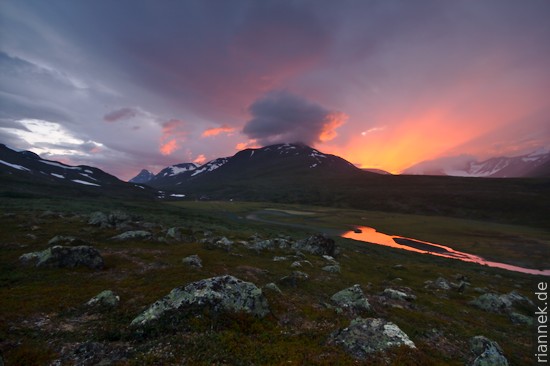
Lapland in the far north of Sweden is one of the few true wildernesses in Europe. Large lakes, glaciated mountains, plateaus and valleys with natural braided rivers characterise the landscape (see also The Formation of Mountains). Here, one huge national park borders on the next and Sarek is the remote heart of it all. This national park has no infrastructure like cabins, the nearest road is a 2 days walk away. There are not even hiking trails, apart from two intersecting routes, but even these paths are not marked. And there are bridges only where it is really absolutely necessary.
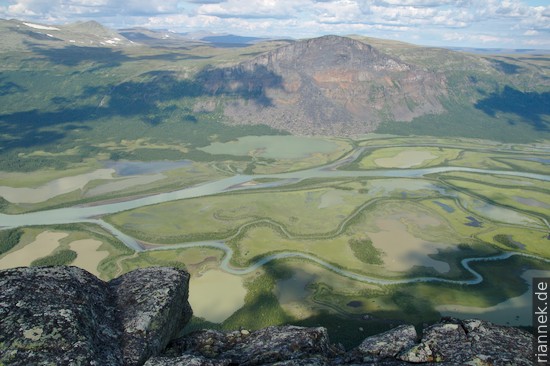
It is unbelievable how much water can be on a single patch of earth. Wild mountain rivers come down from all sides, there are heavy rain showers again and again, and not only the valleys, but even steep slopes are one big bog. No wonder many of the locals walk here with rubber boots (and not because it is this year’s summer fashion). Armies of mosquitoes breed in the swamps, and one night I wake up to what sounds like rain splashing on the tent canvas. However, it was thousands of mosquitoes trying to find a way in.
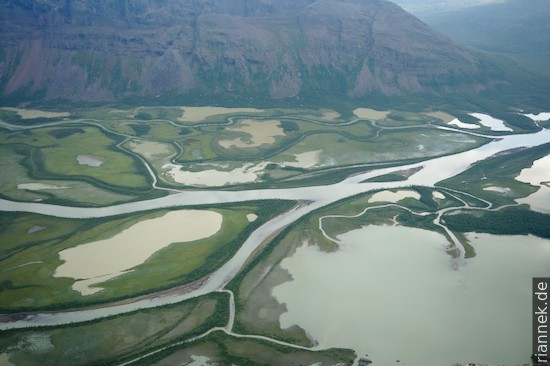
To get to this wilderness, I set off from the Norwegian mining town of Sulitjelma, because it can be reached from the Lofoten via Fauske by ferry and bus. I had enough food in my backpack for 13 days. I don’t know how much my backpack weighed, but it certainly weighed too much. Just hoisting the thing onto my back was torture. And now off I went, over a high pass into Sweden. In the rain, which was getting heavier and heavier. All the mountain streams were so swollen that I really had to take my shoes off at each one, which somehow seems wrong in cold rain. In the evening I was glad to be able to dry my clothes on the stove at the Sørhus mountain hut. While the storm swept around the hut outside, the hut host told me that a few years ago a blizzard had blown the entire hut over the lake. You could still find debris there. The new one was better anchored, he reassured me. The next day, the sun blinked between the clouds now and then and I could look back at the mountains as I crossed the border.
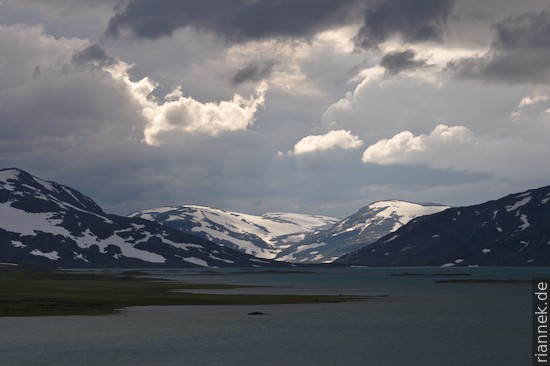
Here I was in Padjelanta National Park. I passed the beautifully situated cabin Sårjåsjaurestugan and pitched my tent for the nightly sunset with a view of Lake Virihaure. The well-maintained Nordkalottleden hiking trail runs through this area, so I met hikers from time to time. So few, though, that you always exchange a few words. The only exception was a guy with reindeer antlers dangling from his backpack. Without returning my greeting, he stormed past me and stopped for a rest a hill further on.
Unfortunately, this is also a story of failing equipment. The sole of my hiking boots, which had been resoled just before the trip, came loose again. From now on, I was busy every evening with a tube of glue, but over the course of the next day it came loose again, each time a little more.
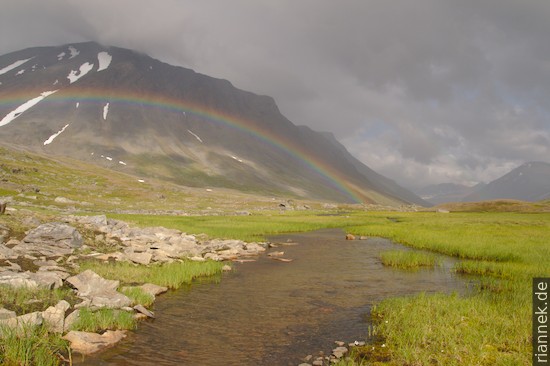
My next stage brought me to the Tarraluoppalstugorna hut, where I left the hiking trail and plunged into the mountain world of Sarek without a path. For the next few days I didn’t meet a soul, I was alone with the mountains and the reindeer. At first I made big detours to avoid a swamp, only to get my feet wet anyway. Then I swapped my boots for my sandals and only made small detours around the deepest parts. The mud slathered against my rain pants with every step. I soaked myself completely, the smell of sweat from several days mixed with the musty smell of the bog. But the water of the moors isn’t even that cold and I made fast progress again. Then the strap of my trekking sandal (1 year old) broke. Deciding quickly, I cut off the braces of my Gore trousers and knotted a new one. But I soon discovered that there was something worse than swamps, namely sheer impenetrable undergrowth blocking the valley floor of the Sarvesvagge. I followed the paths of the reindeer, but it took me half a day to cover a few kilometres. Finally I was able to crawl up a steep slope to ascend to the mountain lake Dielmajavrasj.
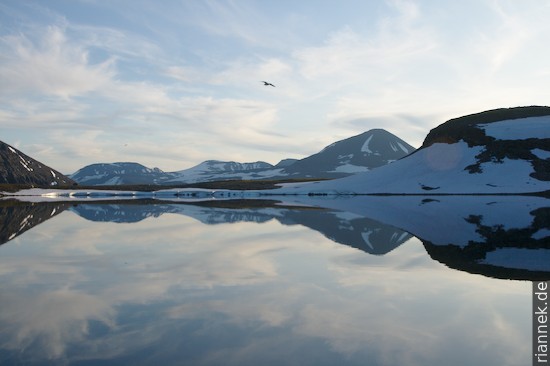
The next morning I scared some reindeer when I crawled out of my tent. But in time they were rather curious. I took advantage of the perfect weather to make a detour to Kanalberget, one of the peaks in the area. A reindeer ran after me for stretches and then trudged across the flat glacier.
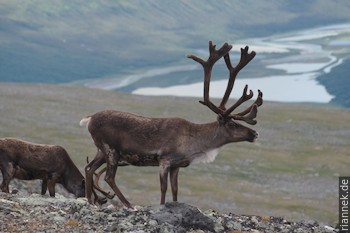
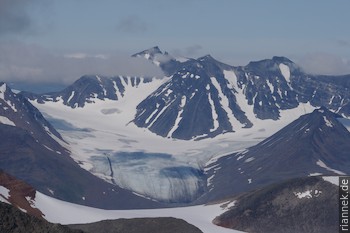
I descended into the valley called Rapadalen. Once I slipped in a steep bog, one of the poles failed to lock, it snapped and I was sitting in a pond. The backpack was dripping after I got up, but it had stayed relatively dry inside. From now on, I had a pole that was a bit shorter than the other one.
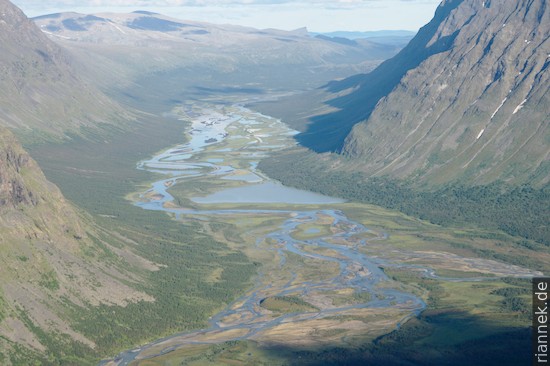
On the other side of the river runs one of the main routes through the national park, but the raging, widely branching river is absolutely impossible to cross. So I had to take the “wrong side” of the valley to get to the Skarja bridge, only to arrive on the other bank 2 days later….
The wrong side was torture, mud and bushes alternated. One of the countless streams I had to wade through was so torrential that my poles began to vibrate like the string of a guitar. Almost up to my pants in ice-cold water, I wondered whether such a stick might break or whether one could get a cramp from the cold water and what the consequences might be…
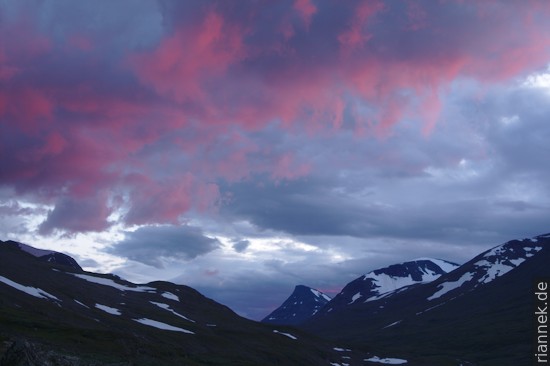
In the meantime, I began to talk to myself. Only a few sentences, sometimes a “that wasn’t worth it at all” and whatever else you think quietly, but the days of loneliness had their effect.
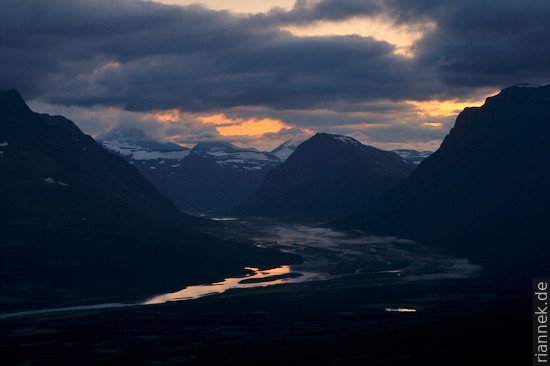
At the Skarja bridge there was suddenly a lot of activity. They came hiking from all directions and there were already several tents. I wasn’t particularly talkative, perhaps I made a similar impression to that guy with the reindeer antlers. I now followed the main route through Rapadalen, in sandals, so that I was faster than everyone else in swamps and along the rivers. While the others were awkwardly getting their boots off for a river crossing, I ran through without slowing down. I didn’t even roll up my trousers, which at least got clean again… And compared to the one stream, these were child’s play. Much worse were the mosquitoes, which became more and more. On the second day, I hiked in a cloud of pests that annoyed me so much that I climbed up to the plateau at the first opportunity. There the views were better anyway and I could reach the summit of Skierffe from behind.
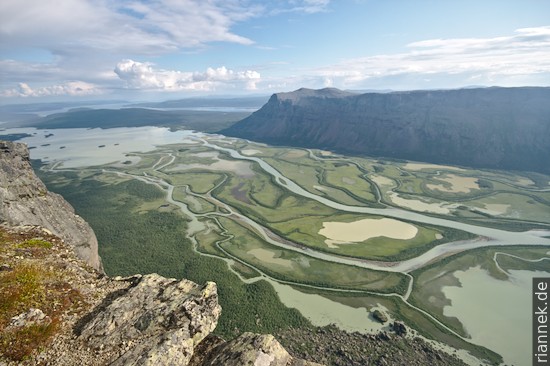
Skierffe is a 700m high cliff above the delta where the river flows into a lake. The green expanse with river branches and lakes, pinched by rocks on both sides, is so grandiose that I also climbed the opposite mountain a day later.
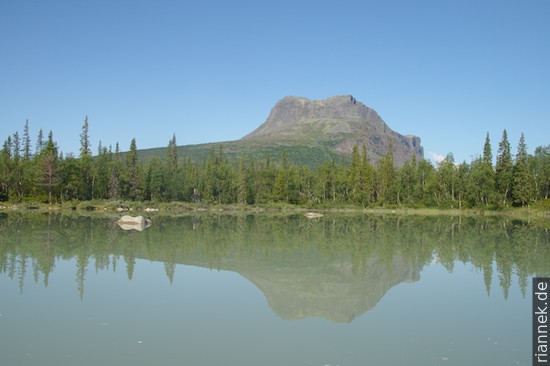
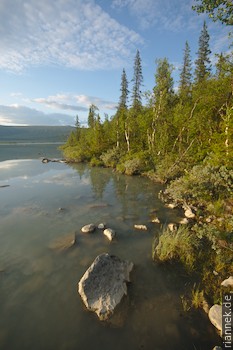
But first I relaxed at the Aktse hut, where I could also replenish my provisions. Chocolate and cheese in particular had been running out for some time.
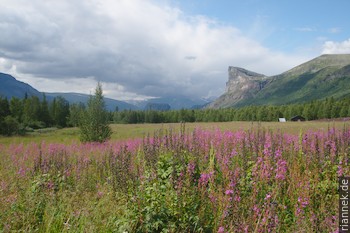
From here I walked north on the Kungsleden. In the meantime, a crack had formed at the toe of the shoe where the sole used to be, and the bog squelched right through it. “Hello bog,” said my foot. “Hello foot,” replied the bog. The two got on quite well and over time a pleasant microclimate formed. It remains to mention that I didn’t get any blisters. The wide footpath seemed like a motorway, teeming with people. Just when I wanted to cross Lake Sitojaure, I was alone. 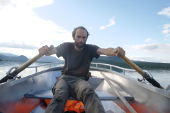 You can either take the motorboat in the morning or take one of the rowing boats. However, there has to be at least one rowing boat on each shore afterwards. Since there was only one on my shore, I had to row across, take a boat in tow and row back before I could finally set off for the new shore. That kept me busy for three hours, rowing into the sunset on the last trip. At home you have to pay to bob around on a duck pond and here I got 3 hours for free. However, a single crossing would have been enough for me.
You can either take the motorboat in the morning or take one of the rowing boats. However, there has to be at least one rowing boat on each shore afterwards. Since there was only one on my shore, I had to row across, take a boat in tow and row back before I could finally set off for the new shore. That kept me busy for three hours, rowing into the sunset on the last trip. At home you have to pay to bob around on a duck pond and here I got 3 hours for free. However, a single crossing would have been enough for me.
A day later I arrived in Saltoluokta, the end point of my hike. Here I had a good time, the buffet with reindeer and salads was fantastic and the sauna with panoramic window and view of the mountains and lake were a fitting end to this fifteen-day adventure.
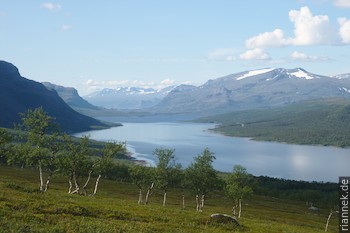
Read on
Lofoten
Røros
Rondane and Jotunheimen
Norwegian Fjords
The Formation of Mountains